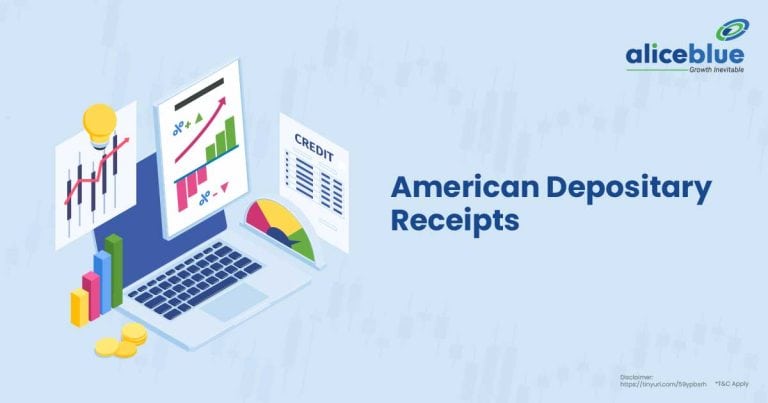The below table shows a list Of the Best Mutual Fund SIP for 3 years based on AUM, NAV, and minimum SIP.
| Name | AUM (Cr) | NAV (Rs) | Minimum SIP (Rs) |
| HDFC Balanced Advantage Fund | 86471.32 | 540.25 | 100 |
| Nippon India Small Cap Fund | 56468.75 | 194.92 | 100 |
| ICICI Pru Equity & Debt Fund | 35122.02 | 406.33 | 100 |
| ICICI Pru Corp Bond Fund | 27285.73 | 28.86 | 100 |
| ICICI Pru Short Term Fund | 18228.37 | 60.45 | 5000 |
| ICICI Pru Technology Fund | 12671.14 | 219.85 | 100 |
| Tata Digital India Fund | 9223.32 | 56.29 | 100 |
| Aditya Birla SL Medium Term Plan | 1859.15 | 38.18 | 100 |
Content:
- What Is A Systematic Investment Plan?
- Best SIP Plan For 3 Years
- Top Mutual Fund SIP For 3 Years
- Best Mutual Fund SIP for 3 years in India
- Who Should Invest In SIP For 3 Years?
- How To Invest In The SIP For 3 Years In India?
- Performance Metrics Of SIP For 3 Years In India
- Benefits Of Investing In Mutual Fund SIP For 3 Years
- Challenges Of Investing In SIP Plan For 3 Years
- Introduction To Best Mutual Fund SIP for 3 years in India
- HDFC Balanced Advantage Fund Direct Plan-Growth
- Nippon India Small Cap Fund Direct-Growth
- ICICI Prudential Equity & Debt Fund Direct-Growth
- ICICI Prudential Corporate Bond Fund Direct Plan-Growth
- ICICI Prudential Short Term Fund Direct Plan-Growth
- ICICI Prudential Technology Direct Plan-Growth
- Tata Digital India Fund Direct-Growth
- Aditya Birla Sun Life Medium Term Plan Direct-Growth
- Best SIP For 3 Years – FAQs
What Is A Systematic Investment Plan?
A Systematic Investment Plan (SIP) is an investment strategy where investors regularly contribute a fixed amount to a mutual fund scheme. This method allows investors to benefit from rupee cost averaging and helps in building a disciplined approach to long-term investing.
SIPs enable investors to invest small amounts periodically, typically monthly or quarterly. This approach helps in mitigating the impact of market volatility as investments are spread out over time, potentially reducing the average cost of units purchased.
By investing regularly regardless of market conditions, SIPs can help investors accumulate wealth over time without the need for timing the market. This strategy is particularly beneficial for those who want to invest consistently but may not have large lump sums available.

Best SIP Plan For 3 Years
The table below shows the Best SIP Plan For 3 Years based on the lowest to highest expense ratio.
| Name | Expense Ratio (%) | Minimum SIP (Rs) |
| ICICI Pru Corp Bond Fund | 0.34 | 100 |
| Tata Digital India Fund | 0.37 | 100 |
| ICICI Pru Short Term Fund | 0.45 | 5000 |
| Nippon India Small Cap Fund | 0.64 | 100 |
| HDFC Balanced Advantage Fund | 0.73 | 100 |
| Aditya Birla SL Medium Term Plan | 0.85 | 100 |
| ICICI Pru Technology Fund | 0.92 | 100 |
| ICICI Pru Equity & Debt Fund | 1 | 100 |
Top Mutual Fund SIP For 3 Years
The table below shows the top Mutual Fund SIP For 3 Years based on the Highest 3Y CAGR.
| Name | CAGR 3Y (Cr) | Minimum SIP (Rs) |
| Nippon India Small Cap Fund | 33.01 | 100 |
| ICICI Pru Equity & Debt Fund | 25.33 | 100 |
| HDFC Balanced Advantage Fund | 24.98 | 100 |
| Tata Digital India Fund | 17.13 | 100 |
| ICICI Pru Technology Fund | 14.61 | 100 |
| Aditya Birla SL Medium Term Plan | 13.5 | 100 |
| ICICI Pru Short Term Fund | 6.86 | 5000 |
| ICICI Pru Corp Bond Fund | 6.51 | 100 |
Best Mutual Fund SIP for 3 years in India
The table below shows the Best Mutual Fund SIP for 3 years in India based on exit load, i.e., the fee that the AMC charges investors when they exit or redeem their fund units.
| Name | AMC | Exit Load (%) |
| ICICI Pru Short Term Fund | ICICI Prudential Asset Management Company Limited | 0 |
| ICICI Pru Corp Bond Fund | ICICI Prudential Asset Management Company Limited | 0 |
| Tata Digital India Fund | Tata Asset Management Private Limited | 0.25 |
| Nippon India Small Cap Fund | Nippon Life India Asset Management Limited | 1 |
| ICICI Pru Equity & Debt Fund | ICICI Prudential Asset Management Company Limited | 1 |
| HDFC Balanced Advantage Fund | HDFC Asset Management Company Limited | 1 |
| ICICI Pru Technology Fund | ICICI Prudential Asset Management Company Limited | 1 |
| Aditya Birla SL Medium Term Plan | Aditya Birla Sun Life AMC Limited | 2 |
Who Should Invest In SIP For 3 Years?
SIP for 3 years is suitable for investors who are looking to build wealth over the medium term and have a moderate risk appetite. This investment horizon is ideal for those who want to benefit from market growth while having a reasonable time frame to ride out short-term market fluctuations.
Young professionals starting their investment journey can benefit from this strategy. It allows them to start with small amounts and gradually increase their investments as their income grows over the three-year period.
This investment approach is also suitable for individuals with specific financial goals that are 3-5 years away, such as saving for a down payment on a house or planning for higher education expenses.
How To Invest In The SIP For 3 Years In India?
To invest in SIP for 3 years in India, start by researching mutual funds with strong 3-year track records. Compare their performance, expense ratios, and investment strategies. Open an account with a reliable broker like Alice Blue to access these funds.
Choose the fund that aligns with your investment goals and risk tolerance. Decide on the SIP amount based on your financial capacity and goals. Set up automatic transfers from your bank account to ensure regular investments.
Monitor your investment periodically, but avoid making frequent changes based on short-term market movements. Consider increasing your SIP amount annually if your financial situation allows, to potentially enhance your returns over the 3-year period.
Performance Metrics Of SIP For 3 Years In India
Performance metrics for SIP investments over 3 years typically include total returns, Compound Annual Growth Rate (CAGR), and consistency of performance. Total returns show the overall growth of the investment, while CAGR provides an annualized growth rate that smooths out short-term fluctuations.
Another important metric is the Sharpe ratio, which measures risk-adjusted returns. This helps in understanding how much return the fund has generated for the level of risk taken. Standard deviation is also considered to gauge the fund’s volatility.
Comparisons with benchmark indices and peer group performance are crucial. This helps in assessing whether the fund has outperformed the market and similar funds over the 3-year period, providing context to its performance.
Benefits Of Investing In Mutual Fund SIP For 3 Years
The main benefits of investing in Mutual Fund SIP for 3 years include disciplined investing, rupee cost averaging, the potential for higher returns, flexibility, and the power of compounding. These factors make SIPs an attractive option for medium-term investors.
- Disciplined Investing: SIPs enforce a regular investment habit, helping investors stay committed to their financial goals regardless of market conditions.
- Rupee Cost Averaging: By investing a fixed amount regularly, investors buy more units when prices are low and fewer when prices are high, potentially lowering the average cost of investment over time.
- Potential for Higher Returns: The 3-year time frame allows for potential market appreciation while providing a buffer against short-term volatility, potentially leading to better returns compared to shorter investment horizons.
- Flexibility: SIPs offer the flexibility to start with small amounts and increase or decrease investments as per financial situations, making them adaptable to changing circumstances.
- Power of Compounding: Over a 3-year period, the benefits of compounding start to become visible, as returns earned also start generating additional returns, potentially accelerating wealth creation.
Challenges Of Investing In SIP Plan For 3 Years
The main challenges of investing in SIP Plan for 3 Years include market volatility, potential for underperformance, behavioral biases, opportunity cost, and the need for regular monitoring. These factors require careful consideration and management for successful SIP investing.
- Market Volatility: Despite the benefits of rupee cost averaging, significant market downturns can still impact overall returns, especially in a relatively short 3-year period.
- Potential Underperformance: There’s always a risk that the chosen fund may underperform its benchmark or peer group, impacting the expected returns.
- Behavioral Biases: Investors may be tempted to discontinue SIPs during market downturns, missing out on the benefits of buying at lower prices.
- Opportunity Cost: Committing funds to a 3-year SIP means those funds are not available for other potentially lucrative short-term investment opportunities.
- Regular Monitoring: While SIPs are largely automated, investors still need to periodically review fund performance and make adjustments if necessary, requiring time and effort.
Introduction To Best Mutual Fund SIP for 3 years in India
HDFC Balanced Advantage Fund Direct Plan-Growth
HDFC Balanced Advantage Fund Direct Plan-Growth is a Dynamic Asset Allocation mutual fund scheme offered by HDFC Mutual Fund. This fund has been operating for 11 years and 7 months, having commenced on January 1, 2013.
HDFC Balanced Advantage Fund is a Balanced Advantage Fund with Assets Under Management (AUM) of 86,471.32 crores. It boasts a 5-year Compound Annual Growth Rate (CAGR) of 21.47%, has an exit load of 1%, and an expense ratio of 0.73%. SEBI categorizes its risk as Very High. The fund’s asset allocation is as follows: Equity at 65.17%, Government Securities at 15.31%, Corporate Debt at 13.20%, Cash & Equivalents at 4.53%, REITs & InvIT at 1.48%, and Others at 0.31%.
Nippon India Small Cap Fund Direct-Growth
Nippon India Small Cap Fund Direct-Growth is a Small Cap mutual fund scheme from Nippon India Mutual Fund. This fund has been in operation for 11 years and 7 months, having been introduced on January 1, 2013.
Nippon India Small Cap Fund is a Small Cap Fund with an AUM of 56,468.75 crores. It has a 5-year CAGR of 38.17%, an exit load of 1%, and an expense ratio of 0.64%. SEBI rates its risk as Very High. The fund’s asset allocation is distributed as follows: Equity at 95.85% and Cash & Equivalents at 4.15%.
ICICI Prudential Equity & Debt Fund Direct-Growth
ICICI Prudential Equity & Debt Fund Direct-Growth is an Aggressive Hybrid mutual fund scheme offered by ICICI Prudential Mutual Fund. This fund has been active for 11 years and 7 months, having begun on January 1, 2013.
ICICI Pru Equity & Debt Fund is an Aggressive Hybrid Fund with an AUM of 35,122.02 crores. Its 5-year CAGR stands at 23.25%, with an exit load of 1% and an expense ratio of 1%. SEBI categorizes its risk as Very High. The fund’s asset allocation is as follows: Equity at 69.92%, Cash & Equivalents at 8.30%, Government Securities at 7.94%, Corporate Debt at 7.87%, REITs & InvIT at 1.97%, and Others at 4.00%.
ICICI Prudential Corporate Bond Fund Direct Plan-Growth
ICICI Prudential Corporate Bond Fund Direct Plan-Growth is a Corporate Bond mutual fund scheme from ICICI Prudential Mutual Fund. This fund has been operating for 11 years and 7 months, having launched on January 1, 2013.
ICICI Pru Corp Bond Fund is a Corporate Bond Fund with an AUM of 27,285.73 crores. Its 5-year CAGR is 7.32%, with no exit load and an expense ratio of 0.34%. SEBI rates its risk as Moderate. The fund’s asset allocation is divided into Corporate Debt at 73.92%, Government Securities at 20.27%, Cash & Equivalents at 3.95%, Certificate of Deposit at 1.57%, and Others at 0.29%.
ICICI Prudential Short Term Fund Direct Plan-Growth
ICICI Prudential Short Term Fund Direct Plan-Growth is a Short Duration mutual fund scheme from ICICI Prudential Mutual Fund. This fund has been in existence for 11 years and 7 months, having been introduced on January 1, 2013.
ICICI Pru Short Term Fund is a Short Duration Fund with an AUM of 18,228.37 crores. Its 5-year CAGR is 7.75%, with no exit load and an expense ratio of 0.45%. SEBI categorizes its risk as Moderate. The fund’s asset allocation is as follows: Corporate Debt at 51.76%, Government Securities at 30.32%, Certificate of Deposit at 8.14%, Cash & Equivalents at 5.50%, Commercial Paper at 3.76%, and Others at 0.53%.
ICICI Prudential Technology Direct Plan-Growth
ICICI Prudential Technology Direct Plan-Growth is a Sectoral-Technology mutual fund scheme from ICICI Prudential Mutual Fund. This fund has been active for 11 years and 7 months, having commenced on January 1, 2013.
ICICI Pru Technology Fund is a Sectoral Fund – Technology with an AUM of 12,671.14 crores. Its 5-year CAGR is 28.75%, with an exit load of 1% and an expense ratio of 0.92%. SEBI rates its risk as Very High. The fund’s asset allocation is distributed as Equity at 94.36%, Cash & Equivalents at 2.78%, Rights at 2.28%, Futures & Options at 0.31%, and Treasury Bills at 0.27%.
Tata Digital India Fund Direct-Growth
Tata Digital India Fund Direct-Growth is a Sectoral-Technology mutual fund scheme offered by Tata Mutual Fund. This fund has been operating for 8 years and 7 months, having begun on December 4, 2015.
Tata Digital India Fund is a Sectoral Fund – Technology with an AUM of 9,223.32 crores. Its 5-year CAGR stands at 28.89%, with an exit load of 0.25% and an expense ratio of 0.37%. SEBI categorizes its risk as Very High. The fund’s asset allocation is simple, with Equity at 98.82% and Cash & Equivalents at 1.18%.
Aditya Birla Sun Life Medium Term Plan Direct-Growth
Aditya Birla Sun Life Medium Term Plan Direct-Growth is a Medium Duration mutual fund scheme from Aditya Birla Sun Life Mutual Fund. This fund has been active for 11 years and 7 months, having launched on January 1, 2013.
Aditya Birla SL Medium Term Plan is a Medium Duration Fund with an AUM of 1,859.15 crores. Its 5-year CAGR is 9.5%, with an exit load of 2% and an expense ratio of 0.85%. SEBI rates its risk as Moderately High. The fund’s asset allocation is divided into Government Securities at 44.94%, Corporate Debt at 41.66%, Cash & Equivalents at 6.50%, REITs & InvIT at 3.89%, Floating-rate Debt at 2.28%, and Others at 0.73%.

Best SIP For 3 Years – FAQs
Best Mutual Fund SIP for 3 Years #1: HDFC Balanced Advantage Fund
Best Mutual Fund SIP for 3 Years #2: Nippon India Small Cap Fund
Best Mutual Fund SIP for 3 Years #3: ICICI Pru Equity & Debt Fund
Best Mutual Fund SIP for 3 Years #4: ICICI Pru Corporate Bond Fund
Best Mutual Fund SIP for 3 Years #5: ICICI Pru Short Term Fund
These funds are listed based on the Highest AUM.
The top mutual funds for SIP over 3 years, based on expense ratio, include ICICI Pru Corp Bond Fund, Tata Digital India Fund, ICICI Pru Short Term Fund, Nippon India Small Cap Fund, and HDFC Balanced Advantage Fund. These funds offer competitive expense ratios and the potential for solid returns.
Yes, you can invest in Mutual Fund SIP for 3 years. Many mutual funds offer SIP options with flexible investment durations. Choose a fund aligned with your risk tolerance and financial goals, and set up regular contributions through a broker or directly with the fund house.
Consider your financial goals, risk tolerance, and investment horizon. Evaluate the fund’s past performance, expense ratio, and fund manager’s track record. Assess the fund’s investment strategy and how it aligns with market trends. Also, consider the minimum SIP amount and exit load.
Research and select a suitable mutual fund. Open an account with a reliable broker like Alice Blue. Choose your SIP amount and frequency. Set up automatic bank transfers for regular investments. Monitor performance periodically and consider increasing your SIP amount annually if possible.
We hope you’re clear on the topic, but there’s more to explore in stocks, commodities, mutual funds, and related areas. Here are important topics to learn about.
Disclaimer: The above article is written for educational purposes, and the companies’ data mentioned in the article may change with respect to time The securities quoted are exemplary and are not recommendatory.









